Menu

THE BLACKSMITH
MUTSUMI HINOURA
- Choosing a selection results in a full page refresh.




















| Blade Length | 245 mm |
| Total Length | 400 mm |
| Steel | Shirogami (White #2) |
| Handle | Burnt Chestnut |
| Ferrule | Black Buffalo Horn |
| Rockwell | 62 |
| Height Spine to heel | 41 mm |
| Width at Spine | 4 mm |
| Weight | 155 grams |
| Bevel | Double (50/50) |
The Blacksmith
Mutsumi Hinoura-san is the son of legendary blacksmith Tsukasa Hinoura-san and is becoming a bit of a legend in his own right! Having been trained by such a highly skilled smith, Hinoura-sans knives are of incredible quality and performance. He works out of a shop in the Sanjo region and his knives adhere to the styling of many of the other smiths that work in this area. They are a bit thick at the spine where handle and tang come together but gradually get paper thin behind the edge. This blade geometry provides an incredible cutting feel and also provides what we feel is an incredibly comfortable feel in the hand and means the blades have a bit more weight to them than what might be considered "normal". The balance point on these blades is quite far forward which we find really comfortable as it makes the knife feel more like it's pulling itself through ingredients.
This series of knives is made from Shirogami #2 and have a stainless cladding. They can and will rust if not kept dry and clean but only the small portion of carbon steel exposed at the edge is susceptible and only if they are not wiped down after use. Shirogami #2 generally has to be sharpened with more regularity than other steels but its incredibly easy to sharpen and takes a super keen edge.
The Shape
The word "Sujihiki" translates to "flesh slicer" and is designed for all things slicing. Raw and cooked meats, Fish and Beef; it can do it all! The long and slender blades makes it easy to use long, drawing strokes which minimizes the need to saw through meats and helps to provide the perfect slice every time.
Follow these care recommendations for your Japanese knives to protect the edge and keep them sharp as long as possible:
All products are shipped within 24 hours. We offer same day shipping for products ordered by 12pm. Please allow 4-7 business days for your shipment to arrive with standard shipping. Expedited shipping options are also available at checkout.
We offer free shipping on orders within Canada over $150 CAD and free shipping on orders to the US over $200 USD.
Curbside pick-up is available at both our Hamilton and Etobicoke locations.
To make sure our customers are always satisfied, we offer full refunds on products for 14 days after receiving them. See our full return policy for details.
More questions? Check out our shipping policy, our return policy, or reach out to us directly.

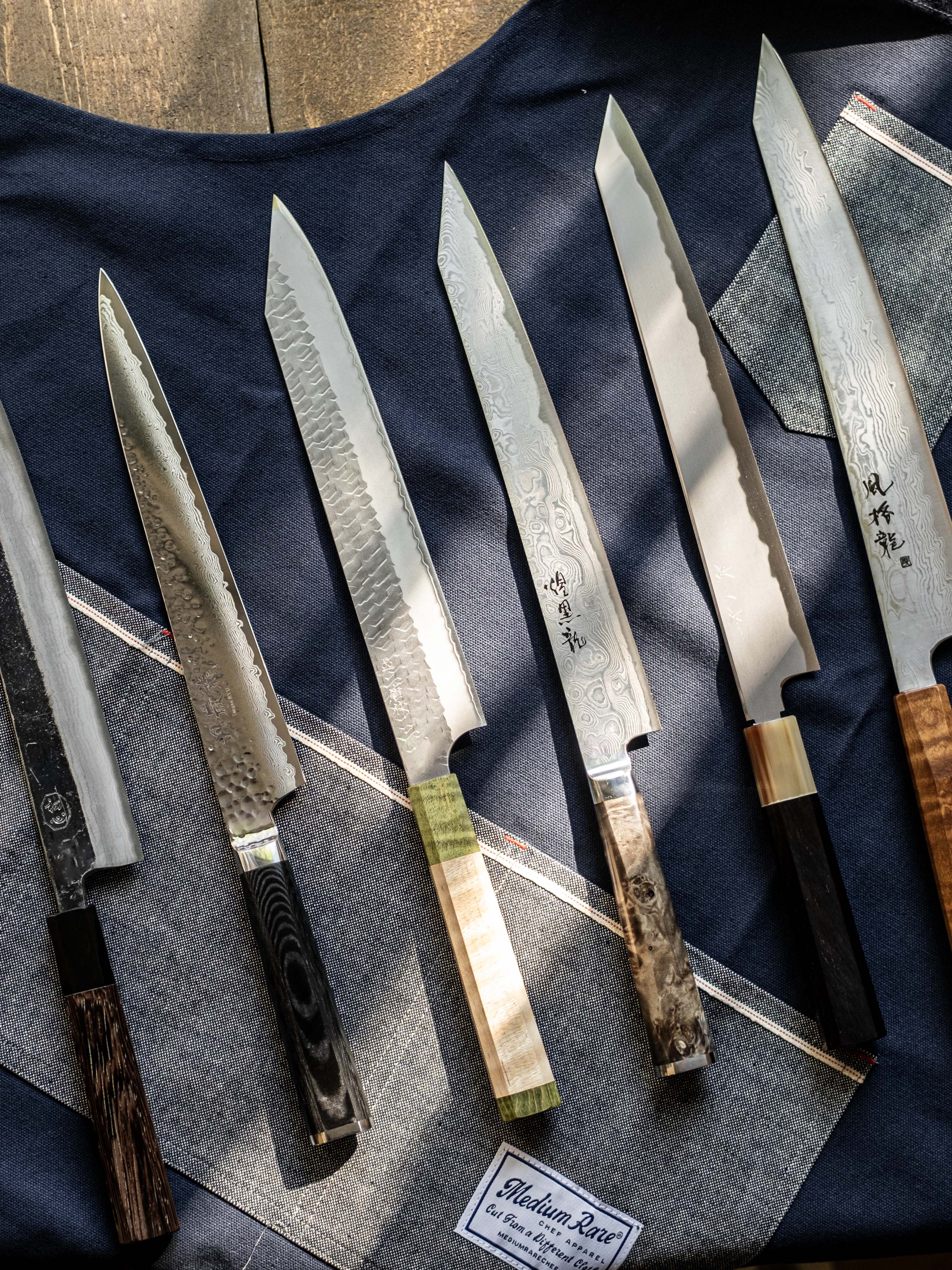
The word "Sujihiki" translates to "flesh slicer". The long, slender blade allows the user to make long drawing strokes, which makes it incredibly adept at slicing and reduces the amount of sawing needed to get through ingredients. They are most commonly in the 240 mm (10 inches) to 300 mm (12 inches) range. The Sujihiki has a very specific use case, so if you're looking for a knife that is capable of slicing and chopping vegetables, we would recommend a Gyuto or Kiritsuke.
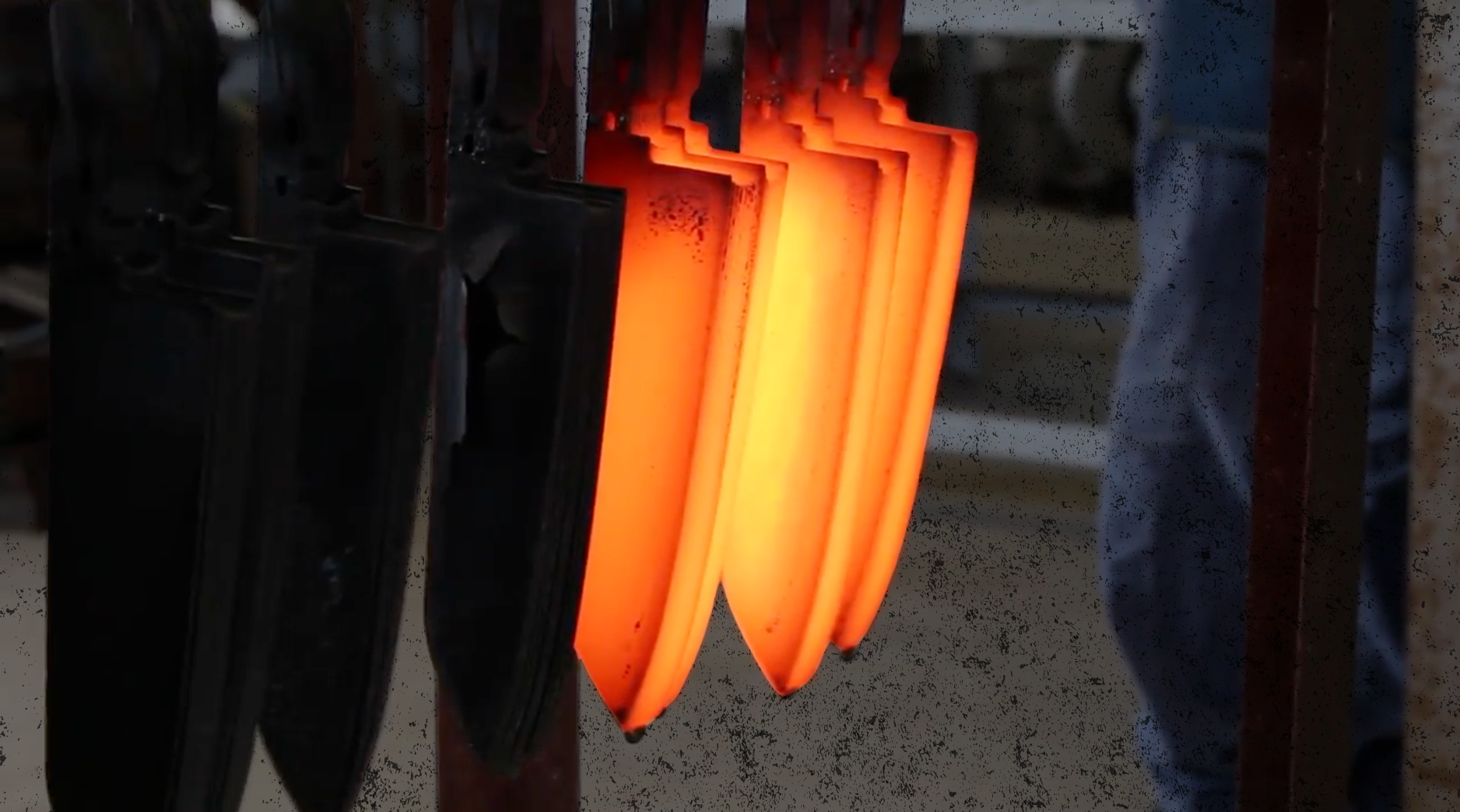
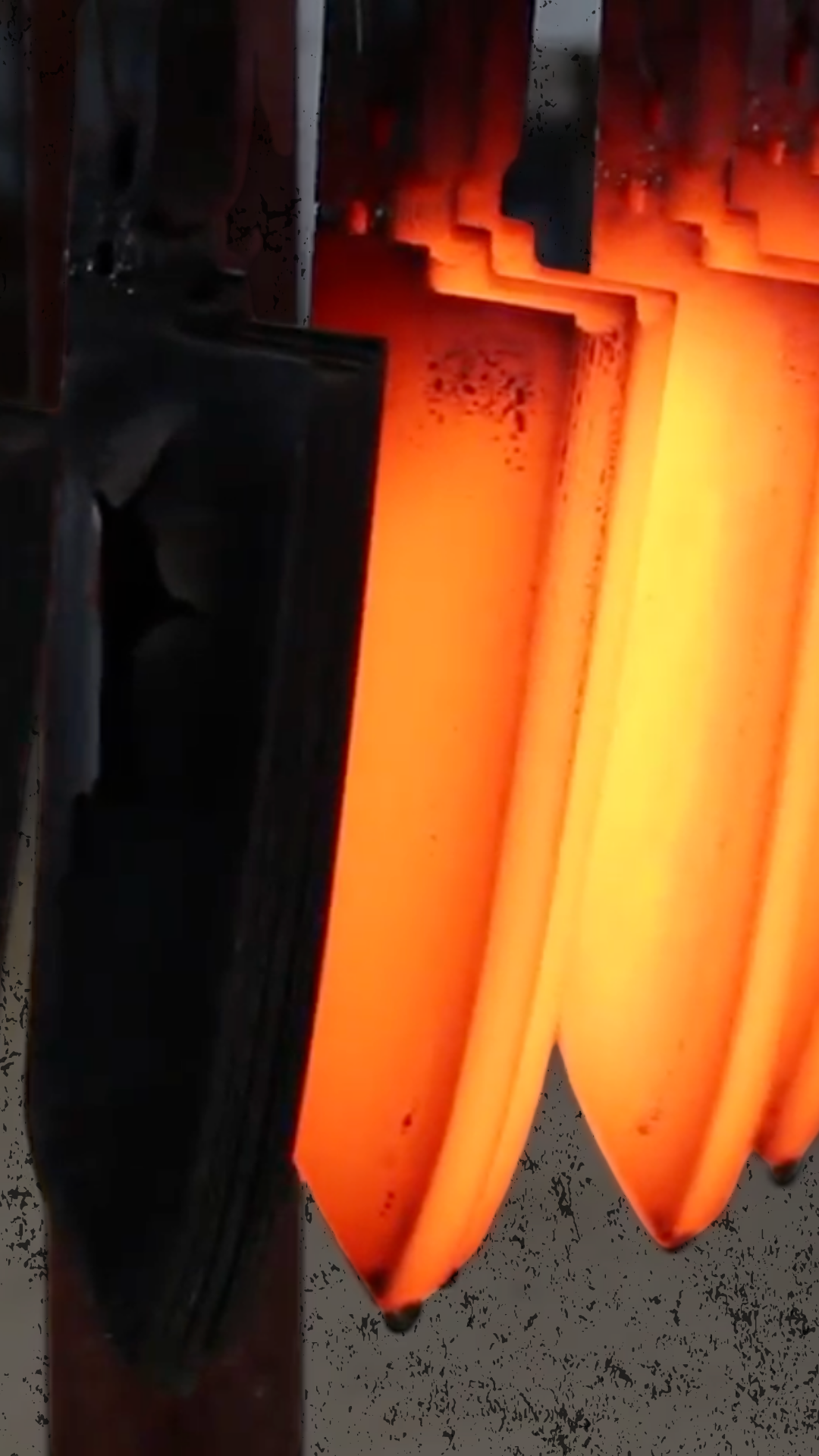
AKA White #2: This is the most pure of all steel types and is renowned for its super easy sharpening and ability to get unbelievably sharp. It is most commonly used in traditional single beveled knives, but is more prone to chipping than other steel types. It’s great for those who want the easiest sharpening experience possible for their knives.
Chemical Composition:
C 1.05-1.15%
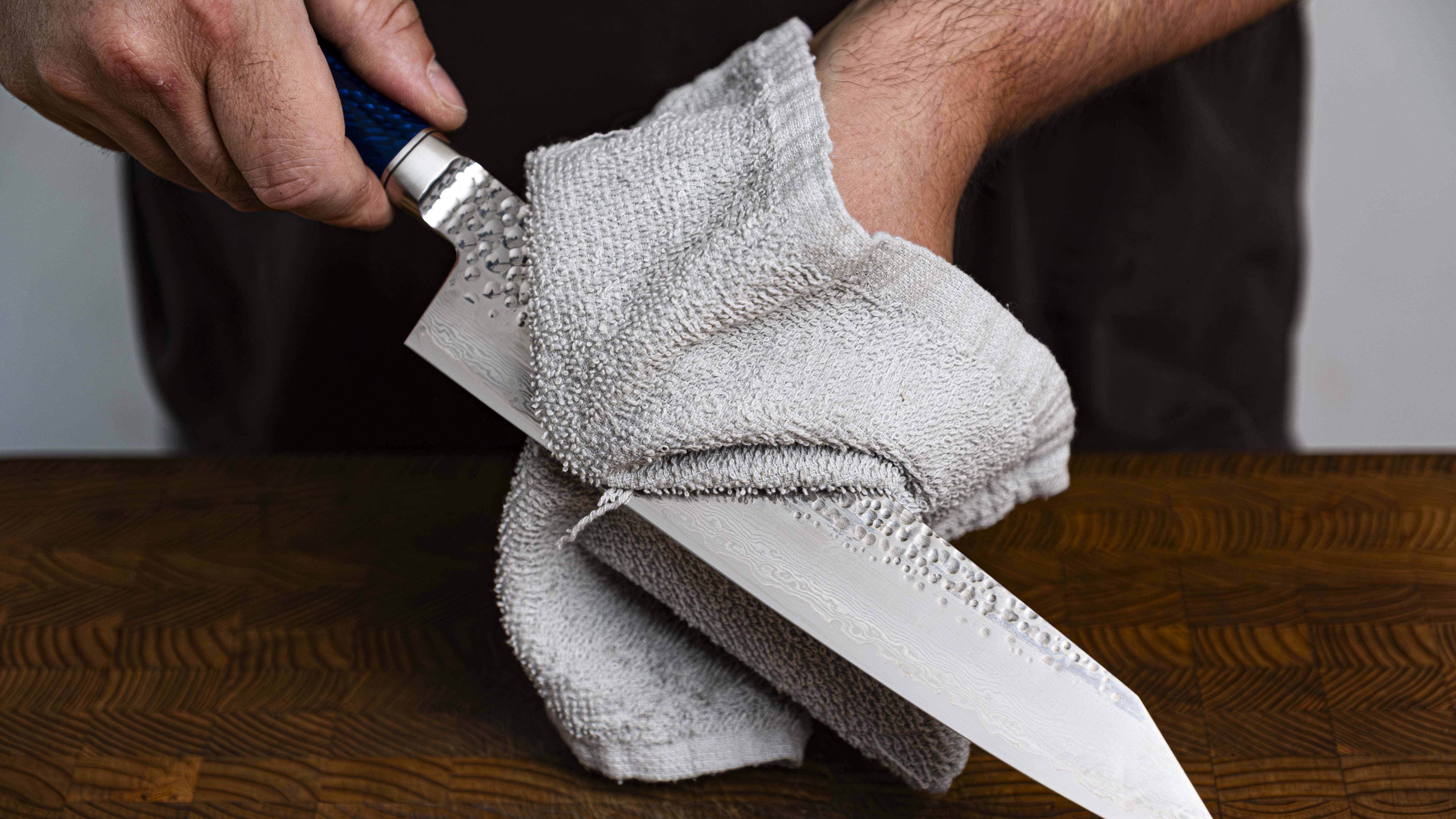
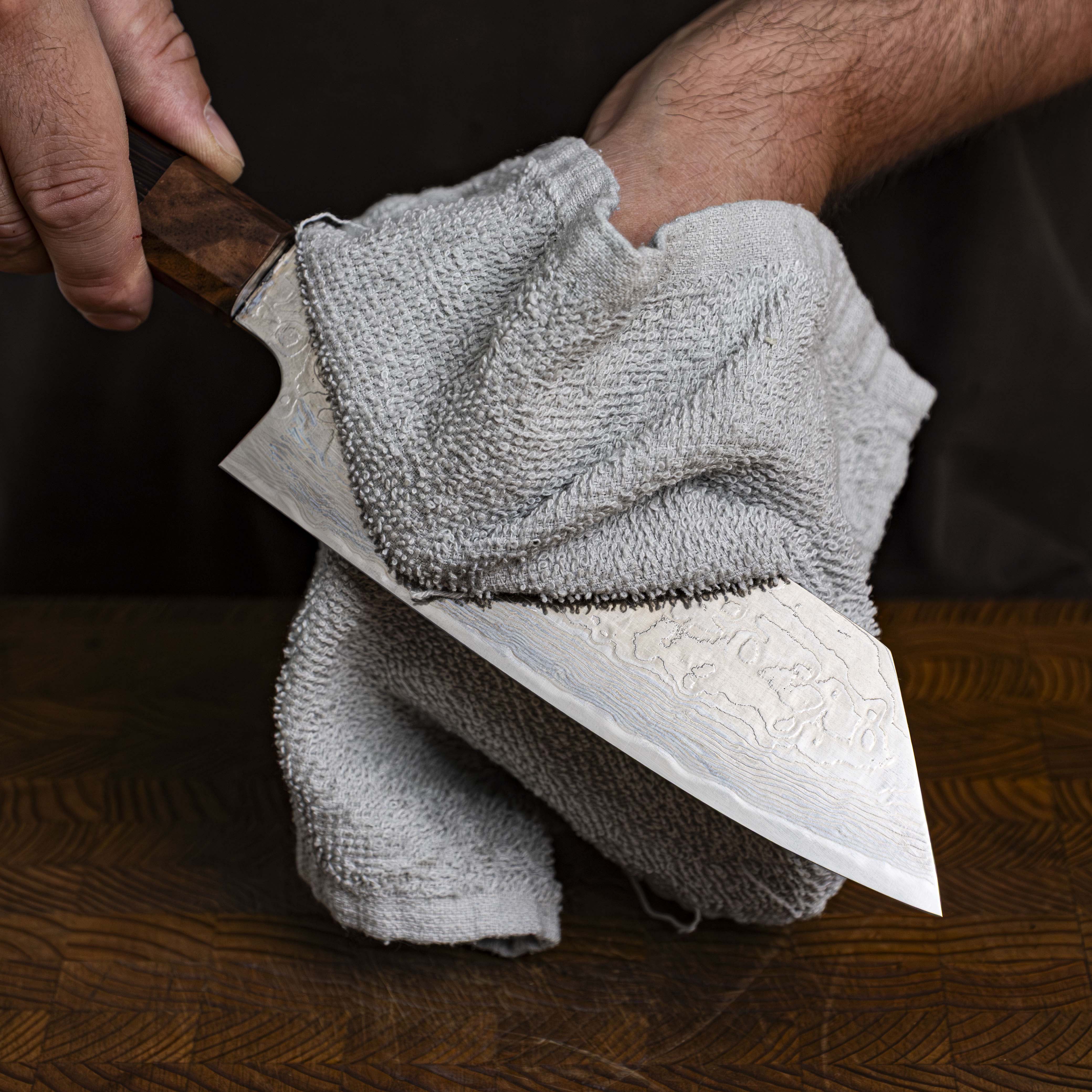
MODERATE MAINTENANCE
Stainless clad knives have two softer outer layers of stainless steel around a harder core layer of carbon steel. The clad line (wavy line near the cutting edge of the knife) is where the layers of stainless steel end. Past this point, the exposed carbon steel is susceptible to rust or discoloration. This edge will develop a patina (a darkening of the steel; blue, dark grey, sometimes black colouration of the blade) no matter how well they are cared for. Stainless clad knives are great for those who want the easy sharpening of a carbon steel coupled with the rust resistant properties of stainless steel.

Mutsumi Hinoura-san is a young smith working in Sanjo city, Niigata Prefecture, Japan. If his family name sounds familiar, it may be because of his father, Tsukasa Hinoura. Tsukasa is a world renowned master smith whose knives are highly coveted all over. Studying under one of the best knifemakers for nearly two decades has provided Mutsumi-san with the skill and eye for creating incredible knives of his own.
